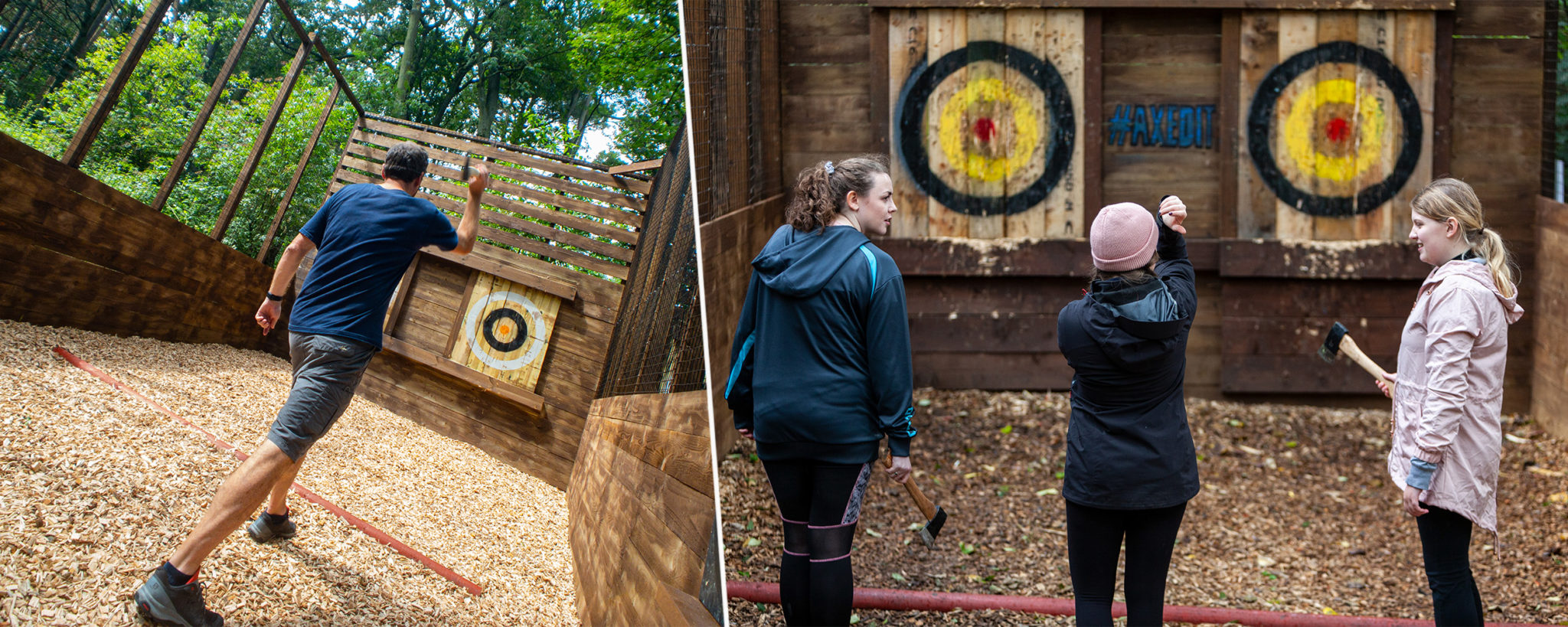Why Axe Throwing Denver Colorado Should Get On Your Bucket Checklist
Why Axe Throwing Denver Colorado Should Get On Your Bucket Checklist
Blog Article
The Enjoyable of Axe Throwing: Exactly How This Sporting Activity Integrates Skill and Adrenaline for a Blast
Axe throwing has actually arised as an astounding sporting activity that masterfully links the demand for exact ability with the rush of adrenaline, offering individuals a appealing and special experience. The act of hurling an axe towards a target demands focus and technique, concurrently promoting an atmosphere of friendship and pleasant rivalry.
The Beginnings of Axe Throwing
Axe tossing, a recreational task that has actually gotten substantial popularity over the last few years, traces its roots back to old times. This primitive sporting activity go back to early human history, when axes were mainly utilized as weapons and tools. The earliest records of axe use in affordable contexts are found amongst the Celts and Vikings, who threw axes for sporting activity in addition to in fight training. The method was not simply a pastime yet a crucial ability for survival and warfare.
Medieval European warriors, specifically during the Center Ages, exercised axe tossing as part of their martial training. The Francisca, a sort of tossing axe utilized by the Franks, ended up being legendary for its lethal precision. This traditional weapon was designed to be tossed at opponent shields and shield, showcasing its twin utility in both sporting activity and battle.
In more current background, axe throwing saw a revival in the logging camps of The United States and copyright in the 19th and 20th centuries. Lumberjacks would certainly take part in friendly competition, evaluating their accuracy and toughness by focusing on wood targets. This development from a survival skill to a recreational task has led the way for its contemporary renewal, with committed locations and organizations now celebrating the sporting activity around the world.
Tools You Required
Comprehending the rich background of axe tossing improves the recognition of the sporting activity's modern-day model. For affordable and entertainment axe tossing, the most frequently utilized type is the hatchet, typically evaluating between 1.25 to 2 pounds with a handle size of about 16 inches.
Similarly vital is the target. Regulation targets are built from wood, with softwood ranges like yearn or cottonwood being liked for their capacity to hold the axe and take in. The target is usually divided right into five concentric circles, each with a details factor value, to help with rating.
Security equipment, however commonly overlooked, is vital. Protective handwear covers can enhance hold and prevent sores, while closed-toed shoes are a should to protect feet from dropped axes (denver axe throwing). Finally, a well-lit, spacious tossing area, complete with safety and security barriers, makes certain a regulated atmosphere where participants can concentrate on refining their skills.
Basic Techniques Clarified
Understanding the fundamental methods of axe throwing is important for both safety and efficiency. The very first method to comprehend is the hold. Hold the axe with a firm, yet relaxed grip, comparable to holding a golf club. The dominant hand should be positioned directly below the axe head, while the non-dominant hand supports completion of the handle.
Your leading foot must be slightly ahead, lining up with your target. This positioning aids in preserving security and directing power accurately in the direction of the target.

Security First
Ensuring security in axe throwing is extremely important to producing a pleasurable and injury-free experience. A well-designed axe tossing facility attributes clear demarcations between throwing lanes, strong backdrops to capture roaming axes, and non-slip floor covering to stop accidents.
Benefits of Axe Throwing
Axe tossing deals a myriad of advantages that expand past straightforward entertainment. The repeated motion of throwing the axe additionally boosts hand-eye control and fine electric motor abilities.
Psychologically, axe throwing needs precision, focus, and technique, making it an exceptional method to sharpen cognitive abilities. The focus required directory to hit the target can act as a kind of mindfulness, enabling participants to remove their minds and decrease anxiety. This mental engagement can be specifically valuable in helping people develop far better problem-solving abilities and mental strength.
Socially, axe throwing is often enjoyed in team settings, cultivating team-building and camaraderie. Whether as component of a corporate event or an informal getaway with good friends, the sport urges interaction and partnership. Additionally, the common experience of finding out and boosting together can reinforce relationships and create long lasting memories.
Verdict

The earliest documents of axe usage in affordable contexts are located among the Celts and Vikings, that tossed axes for sporting activity as well as in fight training. Release the axe when your hands are around at eye degree, permitting the axe's natural turning to assist it in the direction of the target.
A well-designed axe tossing center attributes clear demarcations between tossing lanes, sturdy backdrops to catch roaming axes, and non-slip flooring to avoid mishaps. Participants must be instructed on the right method to throw the axe and manage, highlighting managed, intentional activities over forceful throws.
In recap, axe tossing stands out as a sport that masterfully integrates ability, accuracy, and adrenaline.
Report this page